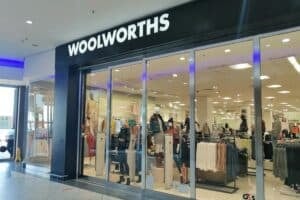The Remembrance Gallery stretches out on the grounds of Leeuwenhof and occupies the former slave quarters.

The Leeuwenhof Slave Quarters Remembrance Gallery has officially opened in Cape Town.
The Remembrance Gallery stretches out on the grounds of Leeuwenhof and occupies the former slave quarters, the Bo-Tuin Huys and the garden between those two important heritage buildings.
It reflects on the cruelty of slavery and includes an exhibition on “enslaved lives” – the story of Leeuwenhof’s slave quarters and the lived reality of those who were enslaved not just in Leeuwenhof but also in the Cape.
It also includes an art exhibition and rotating exhibition.
Speaking at the official opening, Western Cape Premier Alan Winde said when he moved into Leeuwenhof, he learned about the history of the buildings, which, as an estate in the 18th century once had slave quarters.
“It made both Tracy and I pause to reflect on the horror of slavery that taints our country’s past, and so we decided to do something about it.
“This Remembrance Gallery is the result of the process that followed, and I would like to thank all involved for helping give a voice to those who were denied the most basic human rights all those years ago,” said Winde.

The Remembrance Gallery will also support local artists because their paintings and artworks will be sold at the gallery.
“In this way, the Slave Quarters Remembrance Gallery not only honours those who were enslaved by telling their story now but is also an opportunity for their decedents to make a living through their art,” said Winde.
Western Cape Cultural Affairs and Sport MEC Anroux Marais said:
“While visiting Leeuwenhof in 2019, Premier Alan Winde shared the sad story of how those enslaved were locked up in the small wine cellar next to the dining room, while the host and guests were enjoying themselves in luxury”.

The slaves were only allowed outside out after dinner to clear the table and to attend to requests by the host.
”Slavery at the Cape impacted thousands of people and their families. Between 1658 and 1807, an estimated 63 000 people were taken from their homes and brought to the Cape as slaves for the expanding settlement by the Dutch East India Company (VOC), and later by the British colonial authorities”.
The people enslaved in the Cape came from Madagascar, South Asia, Southeast Asia, East Africa, and during the early
VOC period, some were brought in from West Africa.

The Remembrance Gallery will include:
1. An exhibition on the history of slavery
This exhibition aims to create a place of reflection around enslavement. It includes a “Remember us” list of names of people who have been enslaved at Leeuwenhof.
Those who were enslaved were renamed as slaveholders chose. Very few historical documents remained to tell the story of enslaved people. This resulted in marginalisation within historical narratives.
2. An art exhibition
Social, cultural, and economic legacies of slavery are voiced works of art. The works in this exhibition are from the permanent collection of the Cape Town Museum.
Several of the artworks have been procured specifically for this exhibition.
3. A rotating exhibition of artworks for sale
Curated by the Association for Visual Arts (AVA), artworks are sourced through an open call for applications.
Submitted artworks do not necessarily reflect slavery – the artist may have a connection with the history of slavery at the Cape.
Guided tours and visiting hours
The Gallery will be open to the public every first Saturday of the month, from 10 am to 2 pm, and by appointment.
Guided tours of both the historical exhibition and the rotating art exhibition will take place on the first Saturday of each month.
These tours are coordinated by AVA and the Cape Town Museum.

Compiled by Narissa Subramoney
NOW READ: Cape Town school apologises for making students create slave auction ad






